networking devices ( internetwork processor)
Network gadgets, or systems administration equipment, are actual gadgets that are expected for correspondence and connection between equipment on a PC network.
Equipment that works in an organization. An "organization" gadget is a part that makes up the organization framework like modems, switches, and switches. An "arranged" gadget then again alludes to hardware that associates with an organization, which incorporates PCs, printers, and generally, A/V stuff (collectors, media center points and servers, Blu-beam players, and so forth), which work in an Ethernet or Wi-Fi organization or both. Cell phones and tablets all have Wi-Fi however are thought of as "cell phones." See network gadget convention, Ethernet, and Wi-Fi.
there are many devices that are used to transfer data from one point to another point,,
- NODE
- NIC
- MODEM
- ACCESS POINT
- HUB( ACTIVE HUB , PASSIVE HUB)
- BRIDGE
- NODE
A Node is any device connected to a computer network. a node can be a computer or some other device, such as a printer, every node has a unique network address, sometime called data link control
DLC address or Media Access Control (MAC) address. A hub is a mark of crossing point/association inside an information correspondence organization. In a climate where all gadgets are open through the organization, these gadgets are totally viewed as hubs. The singular meaning of every hub relies upon the kind of organization it alludes to.
For instance, inside the actual organization of a brilliant home demotics framework, each home apparatus equipped for sending or getting data over the organization comprises a hub. Nonetheless, a detached conveyance point, for example, a fixed board would not be viewed as a hub. Hubs make, get and convey data and store it or transfer it to different hubs. For instance, a scanner in a PC network makes pictures and sends them to a PC, while a switch puts together information got from the web and disperses it to the singular gadgets inside the organization. The idea of hubs deals with a few levels, however, the higher perspective view characterizes hubs as the significant focuses through which web traffic is ordinarily steered. n a PC organization, for example, a neighborhood LAN or wide region network WAN, hubs might be PCs as well as different bits of information terminal gear (DTE) and information correspondence hardware (DCE). This can incorporate hardware like modems, switches, servers, and workstations. Every one of these hubs is recognized by a MAC address, and its capacity is lost assuming that it goes disconnected. (See too: Endpoint)
NIC (Network Interface Card)
NIC is used to connect with LAN, a computer must be available with special hardware and software, in the hardware category, a computer need a network interface card (NIC) to work with a LAN. some NICs are designed to work with a specific type of LAN cabling and protocol, but another network with more than one type. Short for network interface cards, the NIC is additionally alluded to as an Ethernet card and organization connector. A NIC is a PC development card for interfacing with an organization (e.g., home organization or Internet) utilizing an Ethernet link with an RJ-45 connector. NIC isn't the main part that is expected to associate with the web. Assuming your gadget is a piece of an enormous organization and you need it to associate with the web then a switch is additionally required. The NIC will associate with the switch then this switch will interface with the web.
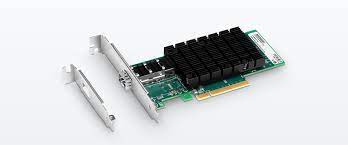 |
NIC (Network Interface Card)
NIC (Network Interface Card) |
- MODEMs
the modem is an electronic device that performs a modulation process that converts digital signals to analog and back. Short for modulator/demodulator, a modem is an equipment gadget that permits a PC to send and get data over phone lines. While conveying a message, the gadget changes over ("adjusts") advanced information to a simple sound sign and sends it over a phone line. Additionally, when a simple sign is gotten, the modem changes over it back ("demodulates" it) to an advanced sign. They convert the digital signal from the computer or transmitted over at one end of a communication link into analog frequencies, this process is known as modulation and demodulation and the word modem is a combined abbreviation of these two words.
a modem is a device that makes it possible for the computer to communicate over a telephone line. The main modems were "dial-up," meaning they needed to dial a telephone number to associate with an ISP. These modems worked over standard simple telephone lines and involved similar frequencies as calls, which restricted their greatest information move rate to 56 Kbps. Dial-up modems likewise required full utilization of the neighborhood phone line, important voice calls would intrude on the Internet association.
There are three types of modem that are used generally for preparing data for transmission over telephone lines.
- EXTERNAL DIRECT CONNECT MODEM
- INTERNAL DIRECT CONNECT MODEM
- ACOUSTIC COUPLER MODEM
- EXTERNAL DIRECT CONNECT ---is used to are housed in separated external cabinet.
- INTERNAL DIRECT MODEM----are paced on circuit bards and plugged into expansion slots inside a PC. Since internal modems draws its power from the PC and needs fewer bales.
- ACOUSTIC COUPLER-----
- it is different from the above two types of modem in that it is being used with a standard telephone receiver. the receiver of the telephone is placed on two cups built into the model. the digital pulses produced by the terminal are converted into audible tones that are picked up by the handset receiver, the signals modem convert them back to digital pulses.
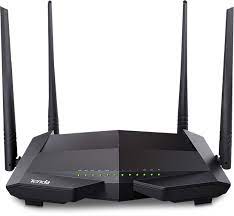 |
|
- ACCESS POINT
An access point is a device, such as a wireless router, that allows wireless devices to connect to a network. A remote passage (WAP) is a systems administration gadget that permits remote fit gadgets to associate with a wired organization. It is more straightforward and simpler to introduce WAPs to interface every one of the PCs or gadgets in your organization than to utilize wires and links. A passageway is a gadget that makes a remote neighborhood, or WLAN, normally in an office or enormous structure. A passageway interfaces with a wired switch, switch, or center through an Ethernet link, and tasks a Wi-Fi transmission to an assigned region. For instance, to empower Wi-Fi access in your organization's meeting room however don't include a switch inside a range, you can introduce a passageway close to the front work area and run an Ethernet link through the roof back to the server room.
Access points may be found in many places including houses, businesses, and public locations, in most houses, the access point is a wireless router, which is connected to DSL or CABLE MODEM,
some modems may include wireless capabilities, making the modem itself the access point, large businesses often provide several access points, which allows employees to wirelessly connect to the central access point.
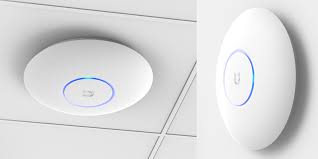 |
| Access point |
- HUB
A common connection point for devices in a network. Hubs are commonly used to connect segments of a LAN. A hub contains multiple ports. when a packet arrives at one port, it is copied to the other ports so that all segments of the LAN can see all packets. The organization center point is a connection point interfacing actual gadgets like a printer, I/O gadgets, work area, stockpiling gadgets, and all servers in the server farm. It is as per the necessity or plans to pick the design of the center. It assumes the fundamental part in star geography. On the off chance that the client is executing a T-molded organization, they interface their gadgets, where there is no reason for utilizing it since they have just two frameworks. That is, a LAN arranges with an Ethernet center actually falls under the class of a star type geography. In the star geography center point fill in as a focal regulator. In any case, intelligently, it falls under the class of a transport type geography. Financially accessible organization center points ordinarily have eight or sixteen ports. Organizing center point work at the actual layer of the OSI model. Conventional Networking centers support 10 MPs evaluated speeds (information rate or data transmission) just, yet a Newer innovation Dual-speed center helps 100 Mbps. There is no directing table in the center point, as you find in the switch or switch.
- ACTIVE HUB
it include additional feature that enables an administrator to monitor the traffic passing through the HUB and to configure each port in the HUB.
- PASSIVE HUB
A passive HUB serves simply as a conduit for the data, enabling it to go from one device to another device.
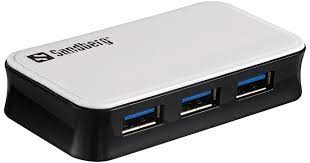 |
| Hub |
BRIDGE
A BRIDGE is a device used to connect the same types of network, bridge can be used to connect and increase the length or number of nodes from a network. the BRIDGE makes connections at the data-link layer of the OSI reference model.
BRIDGES connect network segment . the use of a bridge increases the maximum size of your network.. Unlike a repeater, which simply passes on all signals it receives, a bridge selectively determines the appropriate segment to which it should pass a signal it receives. Network Bridge partitions the enormous organization into little sections, and these portions address a different crash area, and it likewise assists with diminishing the quantity of impact over the organization. Each crash area contains its own singular data transfer capacity, so its exhibition is getting to move along.
- A bridge receives all the signals from both segment A and segment B.
- The bridge reads the addresses and discards all signals from segment A that are addressed to segment A because they do not need to across the bridge ,
- Signal from segment A addresses to a computer on segment B are retransmitted to segment B.
- The signals form segment B are treated in the same way.
Note .. Bridge operate at the Data link layer of the OSI model.
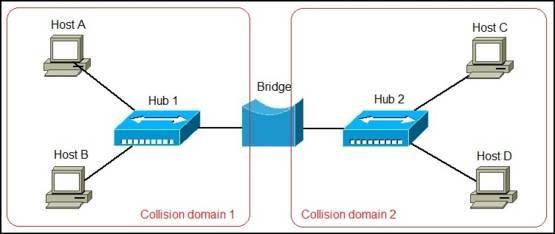 |
| Bridge |




